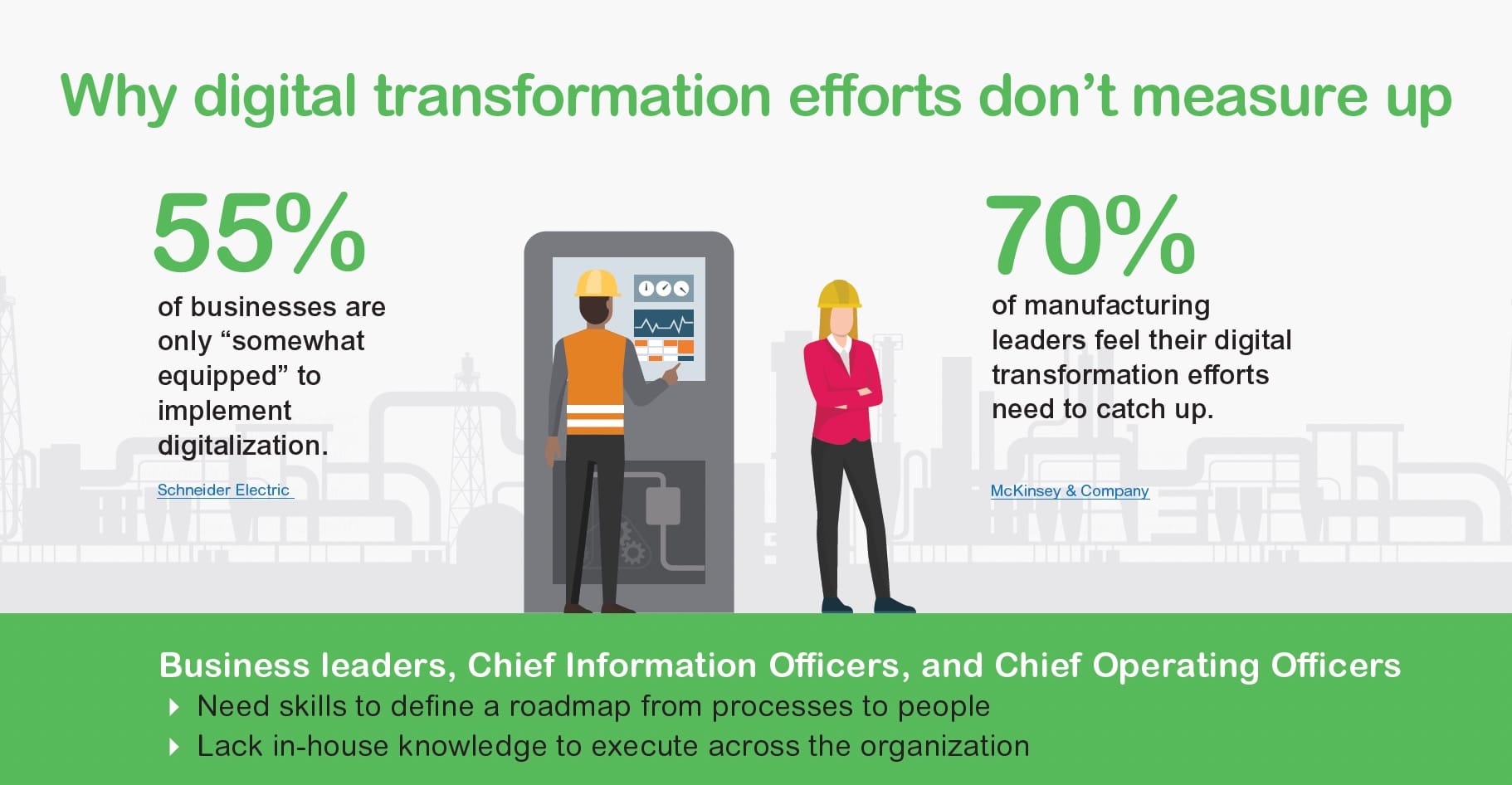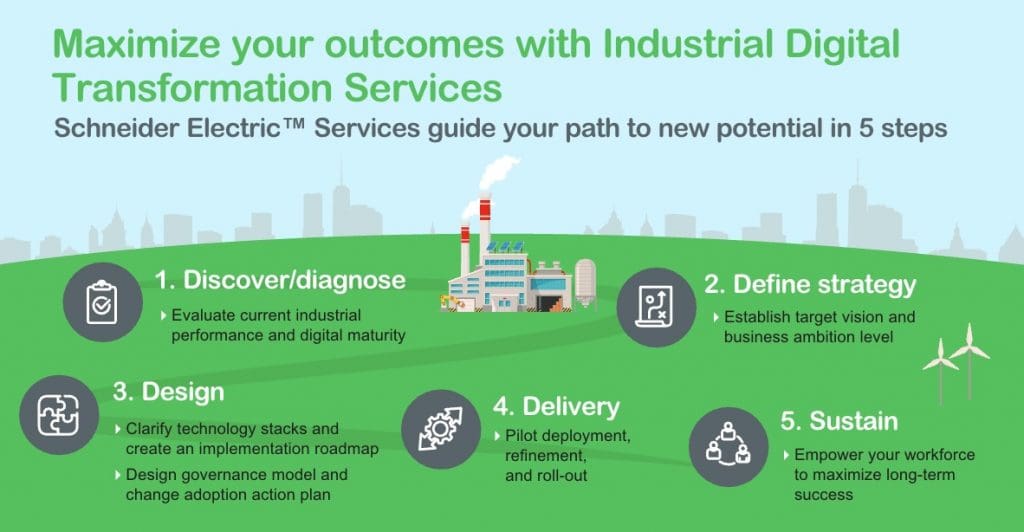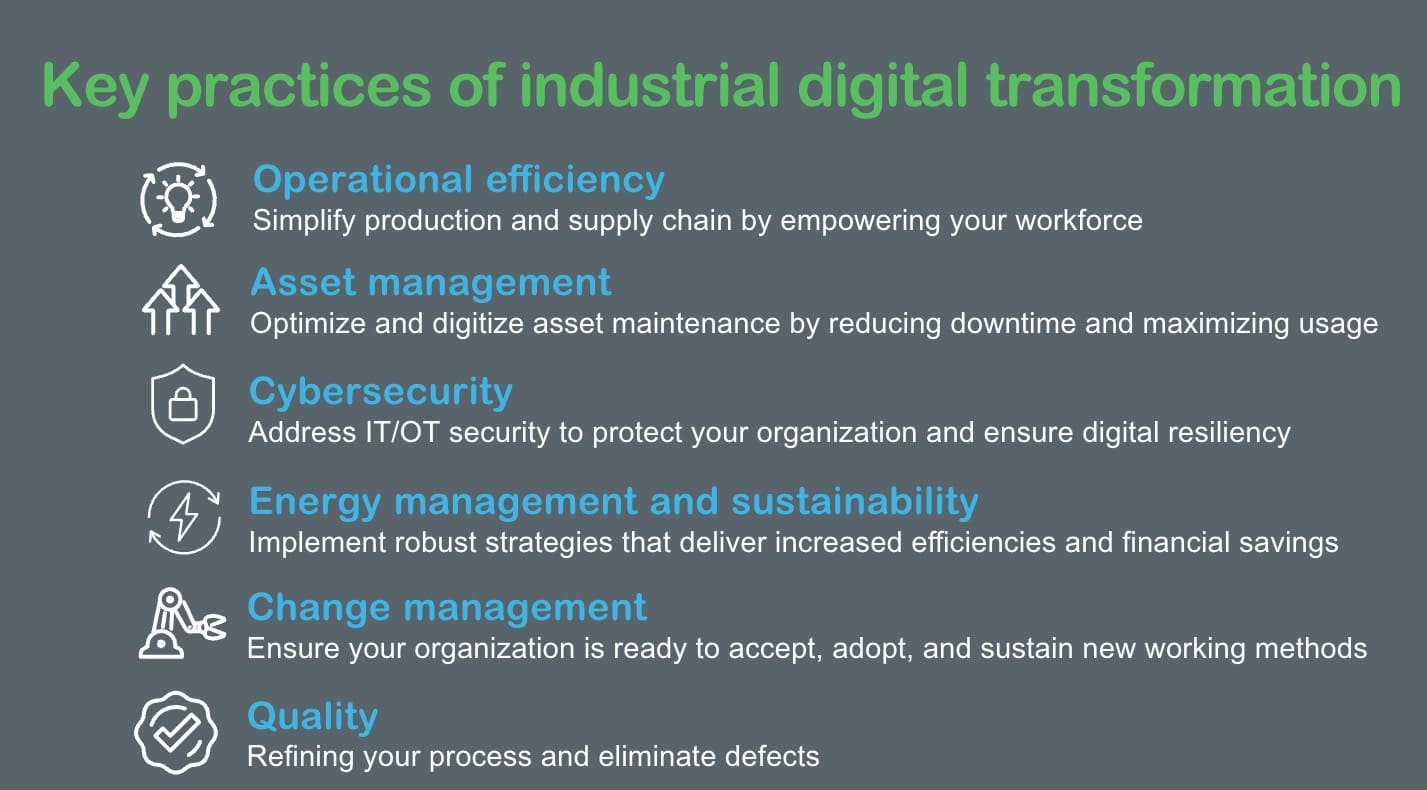Today’s competitive industrial manufacturing sector continues to transform with trends like reshoring to strengthen supply chains, the rise of artificial intelligence (AI), and the emergence of new green technologies. Coupled with the ongoing energy crisis and pressures for more sustainable operations, manufacturers can no longer delay adopting more energy-efficient processes, deploying new technologies, and investing in renewable energy sources.
These market dynamics and trends are widening the digital divide, pushing industrial digital transformation to the forefront for businesses. Companies with prior digital transformation investments managed better with remote operations, while others accelerated their digital efforts to catch up. Digital transformation is becoming increasingly critical for businesses because “they are looking to implement data-driven solutions and improve operational and business performance. While access to data has always been important, the scale and complexity of operations have increased and now include plants distributed across multiple geographies and industry domains.” Research by OMDIA and Schneider Electric.

The obstacles to transformation
While a successful digital transformation promises increased productivity, resource efficiency, and quality, barriers hinder progress toward these rewards:
- Understanding technologies
- Costs–the technology itself and its implementation
- Identifying outside expert partners
- Securing buy-in from the entire business
Understanding business priorities
It all starts with a plan. When developing a digital transformation strategy, end users should first identify whether projects are application- or technology-led. Then, they should seek supportive partners and develop a clear roadmap on how they (or an ecosystem of partners) can meet manufacturers’ business needs with technology solutions.
Leaders must determine the organization’s most urgent needs and focus on resolving business pain points before considering applicable technologies. Then, they can start to capture and analyze data from process silos to drive resilience, productivity, and lower emissions.

Build a team to lead and iterate the transformation
In today’s hybrid world, business departments rarely have insight into each others’ challenges. Successful industrial digital transformation requires collaboration between departments (i.e., IT, OT, C-suite, HR). Clear communication, training, and support are vital to equip employees with the necessary skills and trust in new technologies.
People supersede technology, and teams must trust and commit to digital solutions. Even if the initial ROI is low, with experience, the transformation will become more effective and innovative, yielding faster returns.
Success factors beyond ROI
Multiple digital transformation projects may be occurring at any time. You can track, manage, and clearly communicate each project’s results by prioritizing two or three operational metrics—like connected assets or active users.
Financial metrics are crucial, but qualitative impacts also need to be considered. The projects can have impacts on your sustainability, resilience, and cybersecurity, in the form of:
- Increased visibility
- IT costs
- Shadow IT
- Legacy system management
- Employee upskilling (to attract new staff).
Clear, simple metrics will help your organization track costs and data points to fully understand progress.
Looking outwards for direction and support
Successful industrial digital transformation projects focus on incremental performance improvements and inherit benefits to the overall value chain. Leaders should avoid simple improvements for the sake of ROI or expect strict timelines. A ‘platform’ approach—starting small and scaling up—is recommended–with continuous iterations, support, and flexibility.

Companies understand their own operations but often lack external performance perspectives. Building a business case involves trade-offs between in-house work and vendor partnerships. Benchmarking against past performance and industry standards is a stage of the transformation journey. Consultants can provide valuable benchmarks and performance models, translating progress into financial savings
Collaborating with partners and vendors who provide a clear, goal-aligned roadmap specific to industrial digital transformation is crucial. This is how to start building the business case for and achieving a successful transformation and minimizing risks. To learn about how to get started with your strategy, download our white paper, “Industrial digital transformation— A look into common success strategies and challenges.”




Add a comment